Behringer 130 DUAL VCA
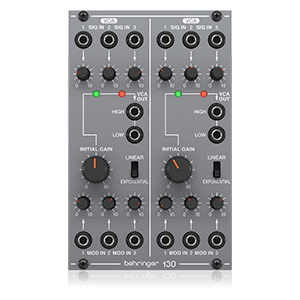

130 DUAL VCA
Legendary Analog Dual VCA Module for Eurorack
- Amazing Dual VCA module from the 80’s
- Authentic reproduction of original “System 100M*” circuitry
- Each VCA features manual gain control and 2 audio outputs (low/high) with signal & clip indicators
- Linear/Exponential switch per VCA allows for increased flexibility
- Eurorack specs: 16 HP, 30 mA +12 V, 20 mA -12 V
- 3-channel mixer per VCA allows independent mixing of all input signals
- 16 controls and switches give you real-time access to all important parameters
130 DUAL VCA
| | | |
|---|---|---|
Modular SynthesisThe 80’s was the golden age of electronic music. Synthesizers were at their prime and almost every hit song and movie soundtrack at that time had a synth in one form or another. Modular synths have become more and more popular with professionals and enthusiasts over the years and they’re about to get even better. | 130 DUAL VCAThis is the Behringer SYSTEM 100 130 DUAL VCA. An authentic reproduction of the original “System 100M†circuitry from the 80’s that can fit in a standard Eurorack case. Mix the 130 DUAL VCA in with your existing rig or start your modular synth journey from here. Either way you’re sure to have a lot of fun. | VCA ControlsEach VCA in the 130 DUAL VCA comes equipped with three Sig In signal input jacks with their own gain controls. These inputs can accept audio signals via a 3.5 mm jack. The VCA’s in the 130 also have a manual gain control, a low and high output as well as signal and clip indicators to keep an eye on your signal’s levels. The low output can be connected to guitar amplifiers or mixers while the high output can connect to line level inputs in mixers or powered speakers. The outputs can be further modified to be linear or exponential via a switch located next to the gain knob. |
130 DUAL VCA
| | | |
|---|---|---|
Module SculptingThe 130 DUAL VCA can also accept signals from other modules via the 3.5 mm Mod In jacks to shape the waveforms of the Sig In signals. These inputs have also have their own Mod In Knobs that control the amount of signal that goes through the Mod In jacks. | Eurorack ReadyInstalling the 130 DUAL VCA is designed to fit into a standard Eurorack case. Just connect the power cables to the power supply and screw in the module using the included screws. This allows for the 130 to be mixed with other synth modules for a truly unique set up. | Complete Your CollectionWhether you’re just getting into modular synths or looking to complete your collection, the 130 DUAL VCA module from Behringer is a great tool to have when creating amazing music. Get the 130 DUAL VCA from your local Behringer dealer today! |
| Weight: | 180 g |
| Dimensions: | 12.9 x 8.1 x 4.39 cm; 180 Grams |
| Model: | 130 DUAL VCA |

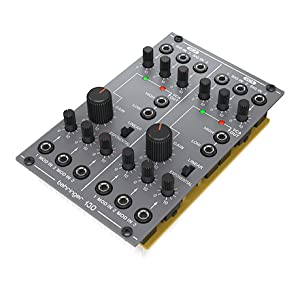
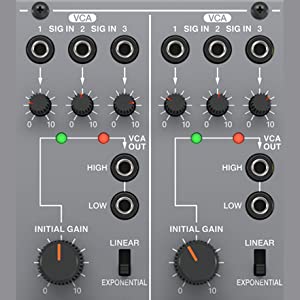
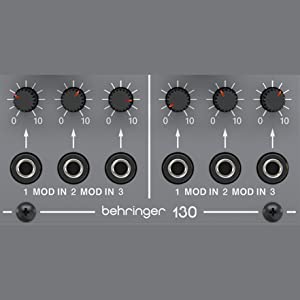
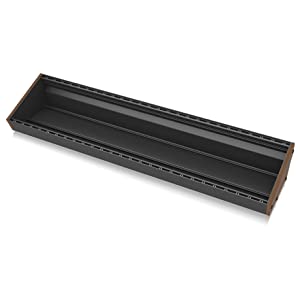

This 3 tier rack stand was totally worth the money. It looks great, was super easy to assemble, had no missing parts, and has given me the ability to conveniently access my units smoothly. My work flow and productivity has increased by tons. I would definitely recommend this rack to anyone buying Behringer chassis units 70-104 HP.
Based upon the circuitry on the classic Moog module, this low pass filter delivers great sound for a reasonable price. Having three CV inputs is a great feature, potentially freeing up a mixer. As one would expect, the filter self resonates using regeneration (resonance).
The three position range switch is a great feature, as the ranges are roughly an octave apart. If you use the apply the filter to noise with regeneration maxed out you get a near sine wave. Changing the range switch will transpose the part up or down an octave.
This unit really needs a Behringer 960 (or other modular step sequencer) to be useful. That being said, the 962 turns the 960 from an 8 step sequencer to a 16 or 24 step sequencer. Works well, and it’s relatively simple to use. Highly recommended, but only if you have a 960.
Nice deal for a basic mixer. Feels well built, knobs are sturdy. Bought it to mix in drums modules before sending to main mixer. Having the multiples on it is an added bonus. I like the Beheringer modules are great modules for starting out in the lower price range, but the modules are nicely made.
MIDICV+Gate
Gate911V-in_S-out961 INTERFACE994 MULTIPLES
960 SEQUENTIAL CONTROLLER2SYSTEM 55SYSTEM III
9609601104HP2140HP
Seemingly, It amplifies the shrunken nature of all three of my semi modular behringer synths. I finally figured out why; the top unit is vertical…which would be fine if the semimodulars were bigger, like 5U high each….they are 3U. This needs to be a stand for at least 4 or 5 units. So… I feel its awkward.
PINK/WHITE /
BEHRINGER / 914 FIXED FILTER BANK POLY DMoog Matriarch
beringerGo
It’s a true ADSR… but from top to bottom, technically an ADRS in the form of the Moog 911 Envelope Generator, labeled T1..T3 and Esus. S-trigger In connector has been replaced with an 1/8″ standard jack. The silkscreen is nice and the front panel metal is just a bit over 1/16″ thick. There are 5 metal standoffs about 9/16″ tall separating the pcb from the front panel…the whole assembly is rugged and well built.
The PCB uses both SMD parts and some thru-hole. All parts are mounted on one side of the pcb facing the faceplate. This helps reduce the cost of the assembly. Other cost reducers are the use of clear soldermask (I have no problem with this) and white silkscreen. True to Moog design, the silicon is all discrete.
My one and only minor minor complaint is that tantalum electrolytic capacitors were used. These have a lower MTBF than aluminum poly electrolytic caps. Maybe a better reproduction using the tantalums? Would have to see them on a scope to know. I’m being nit-picky.
One very nice feature: the PCB is conformal coated. This will keep moisture from ingressing the pcb over a long period of time. Nice work Behringer. The pcb corners are ever so slightly rounded. The pots have a great feel about them.